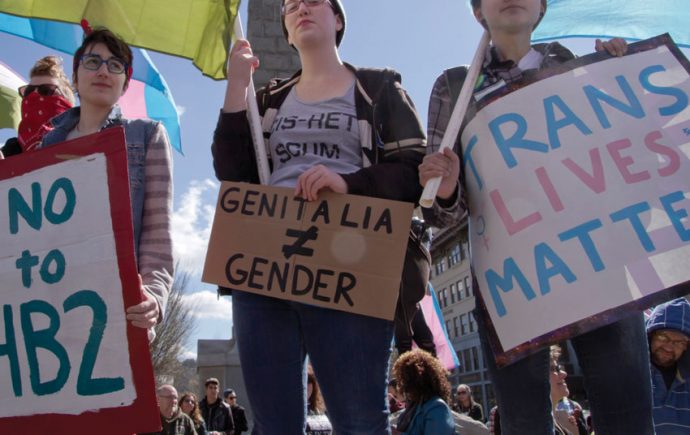It is unquestionably confusion. Here is Laurie Higgins explaining brilliantly at the terrific publication Salvo:
Helpful Definitions
Passing: when a person of one sex pretends to be a person of the opposite sex; self-identification or acceptance as a member of the opposite sex.
Passer: one who passes.
The latest pernicious manifestation of the sexual revolution, the “transgender” movement, is yet another rebellion against and assault on the human body. This revolt is even more fundamental than the homosexuality-affirming juggernaut because it involves not just a revolt against how the body is used but against its very nature, its objective reality.
In blindness and with blinding speed, disciples of the “trans”-affirming movement have been advancing their science-denying beliefs. One would think it impossible that the alchemical-ish belief that men can become women or that humans can be “born in the wrong body” could catch fire in the modern world, but we don’t live in modernity. We live in postmodernity, which denies the existence of objective reality and objective moral truth. Prior to the emergence of postmodernism’s exaltation of subjectivism and relativism, the notion of pregnant or “chestfeeding” men would have been laughed at by all. As Richard Weaver noted, ideas have consequences.
The idea that preceded the social chaos we now see is the idea that biological sex has no intrinsic meaning and no necessary connection to the now-slippery concept of “gender.” From their revolutionary homo-brethren, “trans” activists (henceforth called passers; see left) knew that in order to convince society that the emperor’s peignoir makes him an empress, they had to do some linguistic work.
They started by redefining sex, severing it conceptually from “gender.” In this brave new world, sex and gender, which in the context of biology should be interchangeable terms, now represent distinct phenomena. Sex denotes the two categories into which the human species is divided based on individuals’ chromosomes, anatomy, and biology (i.e., male and female), while “gender” refers to those arbitrary, socially constructed conventions and norms associated with males or females. The American Psychological Association defines gender as the “psychological, behavioral, social, and cultural aspects of being male or female (i.e., masculinity or femininity).”
Read more: Salvo.com
Image credit: www.salvomag.com.

